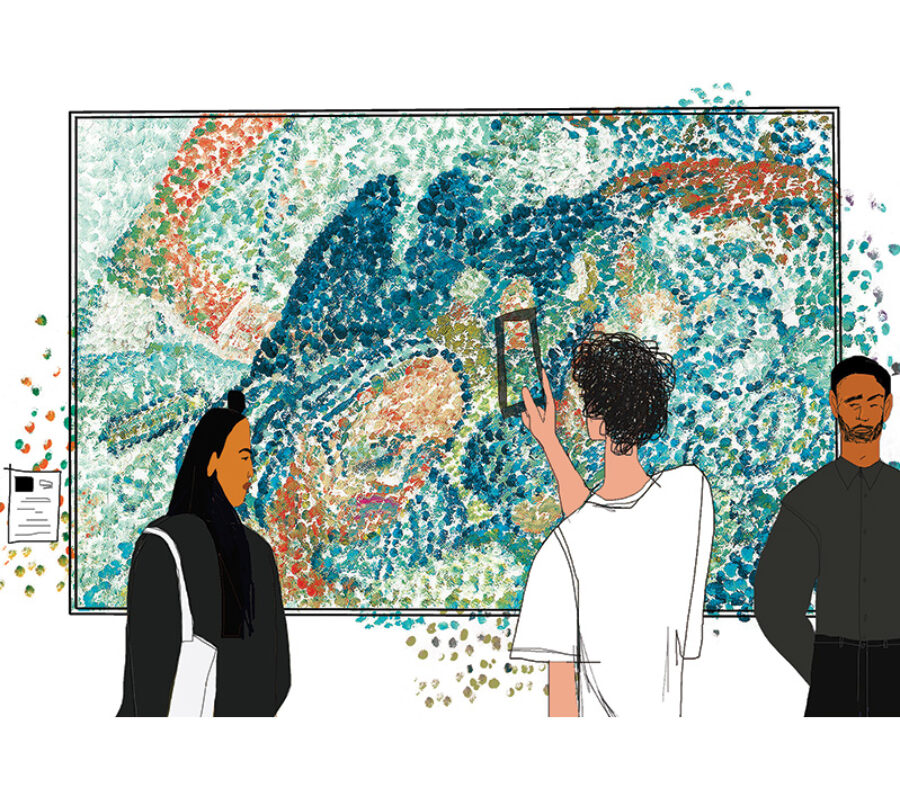
Illustration by Hannah Buckman
The Work of Art
The exhibit had been up for three weeks when the trouble started. As soon as Cliff arrived at the gallery that afternoon, Georgina got up from the stool where they were allowed to rest during their shifts and stepped toward him. Her bronze dreadlocks were in an architectural bun. She cocked it at the woman in front of the painting.
“Been here all morning,” Georgina whispered, her eyebrows curving up, her lips down.
The draped figure stood before the painting with her head at an angle, her hip kinked to one side. A stance of interest. While groups or…































































































